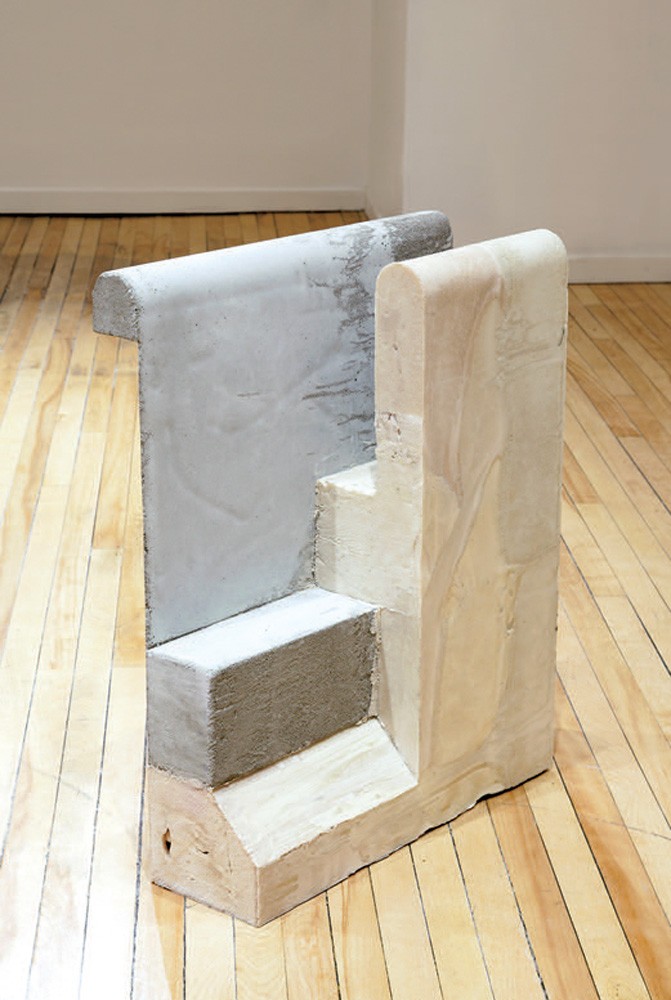Embodied Confusions
Jen Aitken, the Toronto-based sculptor and drawer, never does anything that she won’t make more difficult. Her concrete and polyurethane foam sculptures are unapologetic in their rough elegance and demanding presence. To properly appreciate them, you have to walk around them, get down low to see into their interior spaces, and look closely at the places where one material shifts into another. These are reactions the Toronto-based sculptor expects. “I want to force you to keep looking. If it settles into anything you already know, then it stops there. I want to fix it into something you have never seen before. Then it can persist.”

Jen Aitken, Hepilumor, 2013, concrete and foam, approximately 21 x 21 x 11 inches. All images courtesy the artist and Battat Contemporary, Montréal.
The sculptures make allusions to a number of different practices. In the history of art, her forms remind you of a canonical modernist like Brâncuși; if you think architecture, Brutalism comes to mind; as free-standing objects they move in the direction of unwelcoming pieces of furniture. At first, their geometric structure looks familiar (her design framework is restricted to 45- and 90-degree angles), but the casting and assembly make them ultimately unfamiliar. “If I start to assemble them and they look too much like a recognizable thing, then I’ll move away from that.”

Balimidor, 2014, concrete, foam and wood, 45 x 21 x 12 inches.
The work has a tendency to hunker down; even when they have a vertical presence, they seem to be grounded. “I think that has to do with not wanting to make figurative work and an overtly vertical thing starts to feel totemic. Balimidor is almost that, but in the scheme of sculpture it remains pretty squat. I have always been more interested in lowering things to the floor and I don’t think that is shifting.”
Her sculptural process is complicated and time consuming. She will make between five and ten full-sized paper maquettes for any sculpture she is working on. “This is not a quick process and it is important to me that it be slow. In general, art should just take a long time. Lately I have been living with the work and seeing them every day has been amazing. There is an intimacy with the forms I hadn’t had before.”

Untitled Drawing 50, 2014, gouache and Liquid Paper on vellum, 36 x 24 inches.
Aitken is a highly accomplished sculptor who already shows signs of virtuosity. But her safeguard against facility is to continue embodying confusion. “Once I get good at something I become bored. Making discoveries and pushing things into new territories is what keeps any artist going. So after making six pieces with the foam and the concrete I figured it out and now I have to throw some wrenches into what I’m doing.” The wrenches now in play are resin, plaster and plastic. “It was starting to feel too much like opposites—this dense heavy mass and then this light insubstantial foam that looked like you could kick it around. So the new materials will cause more confusion as to what is what. My hope is that you’ll never make sense of it.” ❚
To order this issue, click here.

